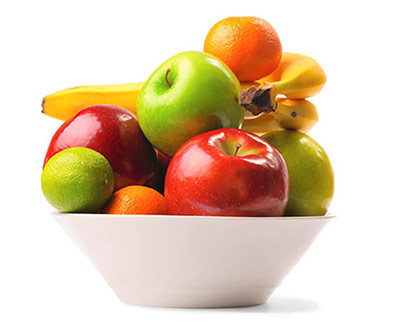Share
Related Topics
Tagged As
The health benefits of a diet rich in fruits and vegetables outweigh the risks of pesticide exposure. Use EWG's Shopper's Guide to Pesticides™ to reduce your exposures as much as possible, but eating conventionally-grown produce is far better than not eating fruits and vegetables at all. The Shopper's Guide to Pesticides in Produce™ will help you determine which fruits and vegetables have the most pesticide residues and are the most important to buy organic. You can lower your pesticide intake by avoiding the 12 most contaminated fruits and vegetables and choosing the least contaminated produce.
For the second year, we have expanded the Dirty Dozen™ with a Plus category to highlight two crops - domestically-grown summer squash and leafy greens, specifically kale and collards. These crops did not meet traditional Dirty Dozen™ criteria but were commonly contaminated with pesticides exceptionally toxic to the nervous system.
We do not strictly control Google ad content. If you believe any Google ad is inappropriate, please email us directly here.

Though the Environmental Protection Agency has been restricting the uses of the most toxic pesticides, they are still detected on some foods. For example, green beans were on last year's Plus list because they were often contaminated with two highly toxic organophosphates. Those pesticides are being withdrawn from agriculture. But leafy greens still show residues of organophosphates and other risky pesticides. That's why they are on the Plus list for 2013.
Tests in 2008 found that some domestically-grown summer squash - zucchini and yellow crookneck squash - contained residues of harmful organochlorine pesticides that were phased out of agriculture in the 1970s and 1980s but that linger on some farm fields.
Genetically modified plants, or GMOs, are not often found in the produce section of grocery stores. Field corn, nearly all of which is produced with genetically modified seeds, is used to make tortillas, chips, corn syrup, animal feed and biofuels. Because it is not sold as a fresh vegetable, it is not included in EWG's Shopper's Guide to Pesticides in Produce. Nor is soy, another heavily GMO crop that makes its way into processed food.
The genetically modified crops likely to be found in produce aisles of American supermarkets are zucchini, Hawaiian papaya and some varieties of sweet corn. Most Hawaiian papaya is a GMO. Only a small fraction of zucchini and sweet corn are GMO. Since U.S. law does not require labeling of GMO produce, EWG advises people who want to avoid it to purchase the organically-grown versions of these items.
Dirty Dozen PlusTM
1. Apples
2. Celery
3. Cherry Tomatoes
4. Cucumbers
5. Grapes
6. Hot Peppers
7. Nectarines - imported
8. Peaches
9. Potatoes
10. Spinach
11. Strawberries
12. Sweet bell peppers
+ Kale/collard greens
+ Summer squash
Clean FifteenTM
1. Asparagus
2. Avocado
3. Cabbage
4. Cantaloupe
5. Corn
6. Eggplant
7. Grapefruit
8. Kiwi
9. Mangos
10. Mushrooms
11. Onions
12. Papayas
13. Pineapples
14. Sweet peas - frozen
15. Sweet potatoes
For more information, visit EWG's website at www.ewg.org/foodnews/index.php.
HHI Error Correction Policy
HHI is committed to accuracy of content and correcting information that is incomplete or inaccurate. With our broad scope of coverage of healthful indoor environments, and desire to rapidly publish info to benefit the community, mistakes are inevitable. HHI has established an error correction policy to welcome corrections or enhancements to our information. Please help us improve the quality of our content by contacting allen@healthyhouseinstitute.com with corrections or suggestions for improvement. Each contact will receive a respectful reply.
The Healthy House Institute (HHI), a for-profit educational LLC, provides the information on HealthyHouseInstitute.com as a free service to the public. The intent is to disseminate accurate, verified and science-based information on creating healthy home environments.
While an effort is made to ensure the quality of the content and credibility of sources listed on this site, HHI provides no warranty - expressed or implied - and assumes no legal liability for the accuracy, completeness, or usefulness of any information, product or process disclosed on or in conjunction with the site. The views and opinions of the authors or originators expressed herein do not necessarily state or reflect those of HHI: its principals, executives, Board members, advisors or affiliates.








